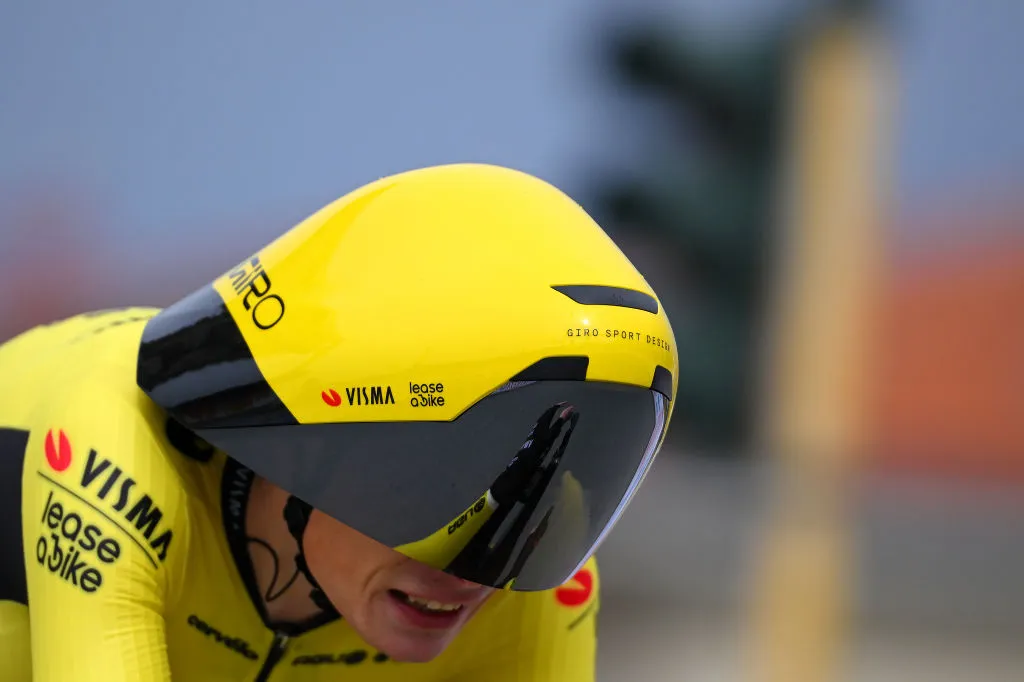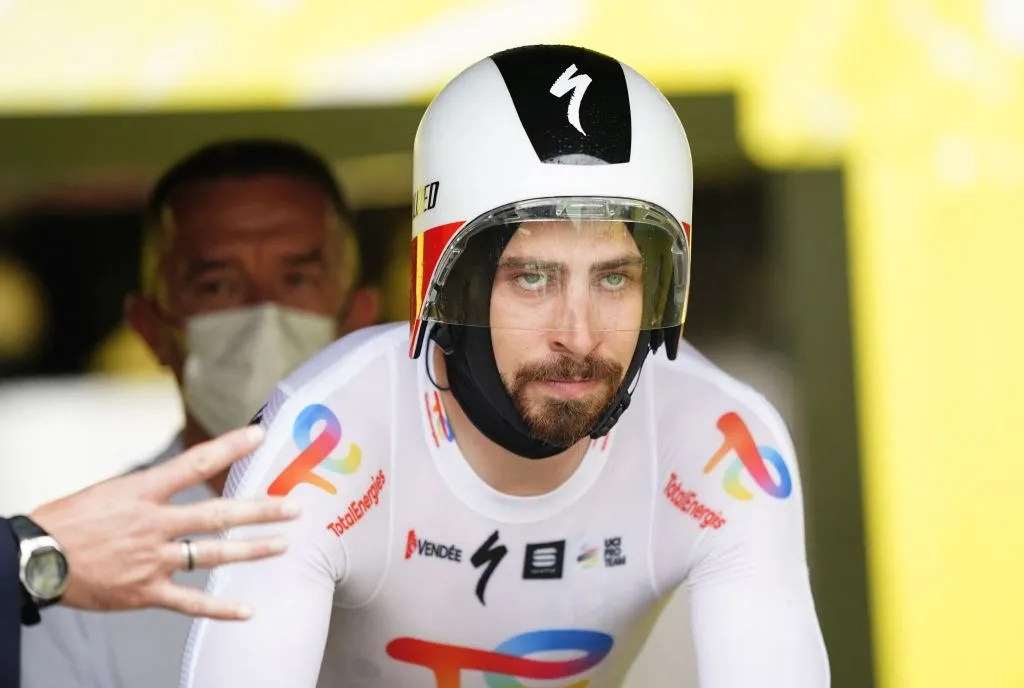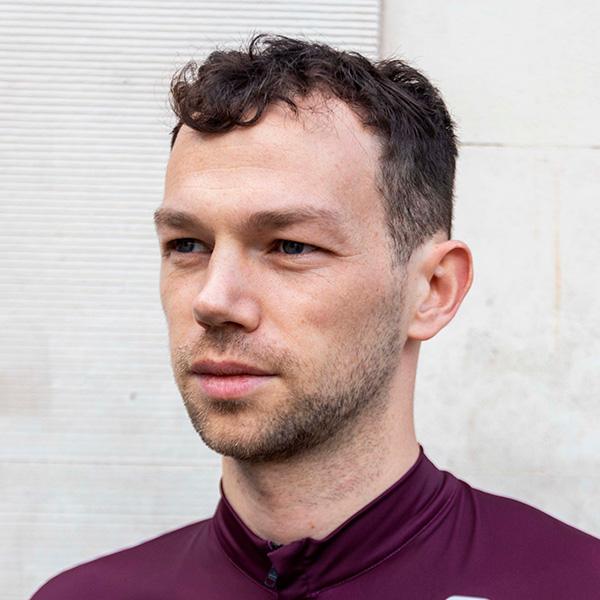The UCI has said it will review its rules on the design and use of helmets in competition.
The “in-depth analysis of the regulations governing the design and use of time trial helmets” follows a period that has seen the size of helmets used in competition balloon, arguably since the 2022 Tour de France, which saw several teams sporting big helmets and striking-looking visors
The statement comes a day after Visma-Lease a Bike debuted the jaw-dropping Giro Aerohead 2.0 helmet, Bahrain Victorious used the Rudy Project Widgream HL 85 helmet and several other teams used the POC Tempor, on the opening stage of Tirreno-Adriatico.
The statement also reveals the UCI has banned the head sock found in the Specialized TT5, released in 2022, from use in UCI events from 2 April.
The UCI deems the head sock, which is used instead of a more conventional helmet strap, a “non-essential” component. These are banned under article 1.3.033 of the UCI regulations.
“A significant issue”

Unlike the Specialized head sock, the UCI acknowledges the Giro Aerohead 2.0 does not contravene existing UCI regulations.
However, it says the time-trial helmet “raises a significant issue concerning the current and wider trend in time trial helmet design”.
The UCI describes this trend as focusing more on performance than the primary function of a helmet, “namely to ensure the safety of the wearer in the event of a fall”.

The worldwide governing body for cycling also cites the ban on non-essential components and the requirement for the commercial availability of products used in competition as spurring the review.
The UCI hopes the analysis will set a clear framework consistent with its targeted objectives and that modification of the rules will be “communicated rapidly after its adoption by the competent UCI bodies”.
The UCI's statement in full
The constant quest for improved performance and ever-increasing attention given to detail is leading professional teams and equipment manufacturers to develop their equipment more often and with ever more radical designs. The Union Cycliste Internationale (UCI) today wishes to clarify its position concerning the category of helmet.
Firstly, the UCI recently informed Specialized of a review it had conducted on the head sock component of the American company’s TT5 helmet. This review was carried out to determine whether the helmet was in line with article 1.3.033 of the UCI Regulations, which prohibits the use of “non-essential” components that are not exclusively for clothing or safety purposes.
After conducting a thorough process, which included consultation with Specialized, as well as examination of documentation linked to the helmet’s certification, safety instructions, and information from public sources, it was concluded that the head sock is a “non-essential” component (article 1.3.033 of the UCI Regulations). As a result, the head sock integrated into the TT5 helmet will no longer be permitted for use at events on the UCI International Calendar, effective from 2 April, 2024.
Regarding the helmet manufactured by Giro Sport Design, which was used by Team Visma|Lease a Bike at the Tirreno-Adriatico prologue, as well as the Rudy Project Windgream HL 85 helmet (used by Bahrain Victorious) and Poc Tempor helmet (used by several teams), the UCI acknowledges that while this may not directly contravene existing UCI Regulations, it raises a significant issue concerning the current and wider trend in time trial helmet design, which focuses more on performance than the primary function of a helmet, namely to ensure the safety of the wearer in the event of a fall.
In view of the evolution of these situations as well as other problems encountered in recent years, in relation to the requirement for commercial availability, the ban on non-essential components and the shape and size of time trial helmets, the UCI will undertake a review of its rules on the design and use of helmets in competition. By doing so, it wishes to ensure that they set a clear framework that is consistent with the objectives targeted. Any modification to these rules will be communicated rapidly after its adoption by the competent UCI bodies.




